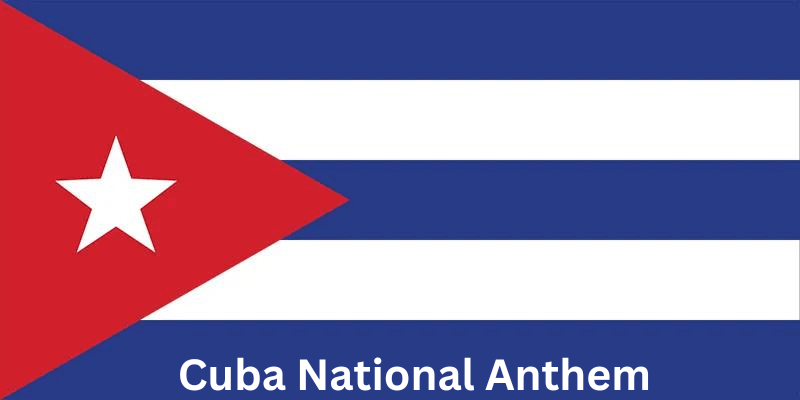When it comes to the soul-stirring melodies that encapsulate a nation's identity, few compositions stand as tall as the Cuba National Anthem. This article delves into the rich history, poignant lyrics, and cultural significance of the Cuban National Anthem, providing a comprehensive understanding of its evolution and impact.
Cuba National Anthem: A Glimpse into Cuba’s Musical Heritage
The Intersection of Music and Culture
Cuba's musical heritage is a vibrant tapestry woven from African, Spanish, and indigenous influences. This unique blend has given birth to an array of musical genres, from the sultry rhythms of salsa to the spirited beats of son cubano.
The Birth of a National Anthem
In 1867, the seeds of the Cuban National Anthem were sown when poet Pedro Figueredo penned "La Bayamesa." Figueredo's impassioned verses echoed the fervor of independence, becoming a rallying cry during the Ten Years' War against Spanish colonial rule.
Cuba National Anthem: The Anthem’s Lyrics
Symbolism and Patriotism
"La Bayamesa" serves as a poignant ode to the Cuban spirit of patriotism and freedom. The lyrics, brimming with courage and sacrifice, vividly depict the longing for liberation from oppression.
A Translation of Emotion
The anthem's powerful verses are a testament to the Cuban people's unwavering resolve and their unbreakable connection to the land they hold dear. It serves as a reminder of the sacrifices made for independence and a call to unity.
Evolution of Cuba National Anthem: From Lyrics to Melody
Musical Adaptations
Over the years, "La Bayamesa" underwent musical adaptations that elevated its emotional impact. The anthem's melody evolved to match the fiery spirit of the Cuban people, creating an even deeper connection between the lyrics and the music.
Official Adoption
In 1902, with the establishment of the Cuban Republic, "La Bayamesa" was officially recognized as the country's national anthem. This pivotal moment solidified its role as a cultural emblem, embodying the nation's struggles and triumphs.
Cuba National Anthem: The Anthem’s Role Today
The Anthem in Modern Cuba
The Cuban National Anthem continues to resonate deeply with the nation's inhabitants. Its verses are proudly sung at public events, symbolizing the enduring spirit of Cuba and its people.
Inspiring Unity
"La Bayamesa" has the remarkable ability to bridge generational divides and foster a sense of unity among Cubans, regardless of age or background. It serves as a unifying force, reminding all of their shared history and aspirations.
FAQs About the Cuban National Anthem
1. What is the significance of "La Bayamesa" in Cuba's history?
"La Bayamesa" holds immense historical significance as a symbol of Cuba's struggle for independence and resilience against oppression.
2. Who composed the music for the Cuban National Anthem?
The music for the anthem was composed by Manuel Muñoz Cedeño, who skillfully matched the melody to the anthem's powerful lyrics.
3. How often is the Cuban National Anthem sung in modern Cuba?
The anthem is frequently sung at national events, official ceremonies, and gatherings that celebrate Cuba's cultural heritage.
4. Are there any variations of the anthem's melody?
While the anthem's melody has seen minor variations over the years, its essence and emotional impact have remained steadfast.
5. What role does "La Bayamesa" play in shaping Cuban identity?
The anthem serves as a cultural touchstone, reinforcing the values of freedom, resilience, and national pride that are central to Cuban identity.
Conclusion
The Cuba National Anthem, "La Bayamesa," encapsulates the spirit of a nation's journey for freedom and identity. Its heartfelt lyrics and stirring melody have woven themselves into the very fabric of Cuban culture, serving as a reminder of the country's enduring resolve and shared history. As the anthem resounds through time, it continues to unite generations and stand as a testament to the indomitable Cuban spirit.
References
- Pérez Fernández, Rolando. "El Himno Nacional: Notas para su Historia" [in Spanish]. Centro de Investigaciones José Martí, 2013.
- Sublette, Ned. "Cuba and Its Music: From the First Drums to the Mambo." Chicago Review Press, 2007.
- Cristóbal Díaz Ayala. "Nationalism and Identity in Cuban Music: Emilio Grenet and the Arcaño-Pertuz School" in Musical Migrations: Transnationalism and Cultural Hybridity in Latin/o America, 2013.
